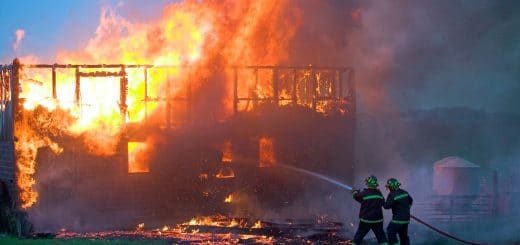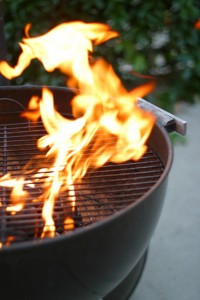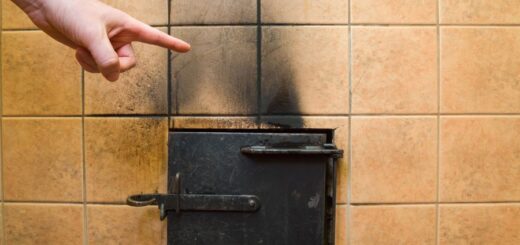Types of Damage Caused by Smoke and Soot
Sometimes after a fire is put out in a home, not much thought is given to the effects of smoke and sootSoot is fine black particles composed of carbon and other ma... More. In fact, this is what homeowners should be most worried about as smoke and sootSoot is fine black particles composed of carbon and other ma... More often cause more damage than the fire itself. Spreading throughout the property after the fire is out, the smoke and sootSoot is fine black particles composed of carbon and other ma... More byproducts will settle onto the walls, ceilings, furniture, and other surfaces and cause severe etching and tarnishing. Without immediate fire damage restoration, these effects can quickly become permanent.
Apart from the damaging effects of smoke and sootSoot is fine black particles composed of carbon and other ma... More in your home, these byproducts can also affect your physical health. Smoke and sootSoot is fine black particles composed of carbon and other ma... More inhalation can contribute to severe negative health effects, including coughing, watery eyes, and even lung cancer.
This is why it’s essential to have a restorationRestoration is the process of returning a property to its pr... More company clean up the smoke and sootSoot is fine black particles composed of carbon and other ma... More from all surfaces and crevices of the home to avoid permanent damage.
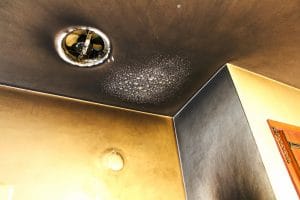
SootSoot is fine black particles composed of carbon and other ma... More is produced when fire doesn’t completely burn its fuel source
Types of Damage Caused by Smoke and SootSoot is fine black particles composed of carbon and other ma... More
1. Wet Smoke
For homes that experienced a smoldering fire burning at a low heat, it’s common to find wet smoke residueSmoke residue is the fine, oily, or powdery particles left b... More. Unlike the powdery dry sootSoot is fine black particles composed of carbon and other ma... More more commonly found in fast-burning fires, wet smoke is clammy and sticky. It’s also a lot more difficult to clean because it can easily smear, especially without the proper cleaning techniques or products.
Don’t hesitate to call for a fire damage restorationFire damage restoration is the process of repairing and rest... More professional if you have wet smoke damage. Trying to clean up this mess will often make it worse, which can also result in permanent damage.
2. SootSoot is fine black particles composed of carbon and other ma... More Inhalation
There’s always a ton of sootSoot is fine black particles composed of carbon and other ma... More that occurs as a result of chemical combustion as materials burn. SootSoot is fine black particles composed of carbon and other ma... More is a powdery, black substance that is produced when the fire doesn’t completely burn its fuel source. When the fire occurs, the sootSoot is fine black particles composed of carbon and other ma... More ionizes, becoming attracted to all different kinds of surfaces. It can also get caught in your HVAC system and get distributed throughout your home.
SootSoot is fine black particles composed of carbon and other ma... More inhalation can be a major health risk, irritating your lungs and airways, it can also leadLead is a heavy metal that can be toxic to humans, especiall... More to more serious health problems in the future. The possible health concerns are another reason to have the sootSoot is fine black particles composed of carbon and other ma... More cleaned up right away and by a professional.
3. Staining
After the fire’s been extinguished, the smoke damage will be clearly visible, but other surfaces may not show the damage until a few days later. In fact, it’s common for smoke damaged walls and floors to turn yellow after a few days. Marble and granite countertops as well as exposed wood can also become permanently discolored if not treated right away.
Metal surfaces like aluminum, brass, steel, and iron can also start to tarnish as a result of smoke and soot damage. The sooner these surfaces can be treated by a professional, the higher the chance they can be saved and avoid permanent staining.
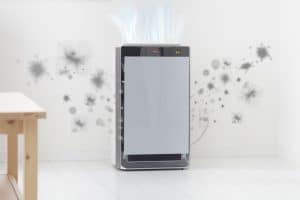
OdorAn odor is a smell, often detectable by the human nose, whic... More is caused by tiny microscopic particles that cling to walls, furniture and other items inside your home
4. Odors
While some effects of smoke damage are easy to see, with some materials it is easier to detect the odorAn odor is a smell, often detectable by the human nose, whic... More. Like on clothing and furniture, it won’t be hard to miss the smoky smell wafting from these fabrics. This is because the smoke particles become embedded within the materials of clothing, carpeting, and upholstery. If not treated promptly, the smell will linger for a long time. Surely cleaning hard surfaces is one thing, but it’s much harder to remove embedded odorAn odor is a smell, often detectable by the human nose, whic... More particles from fabric.
Often times, a smoke odorAn odor is a smell, often detectable by the human nose, whic... More removal professional is needed to fully deodorize the fabrics.
5. Skin Irritation
Another reason why the smoke and sootSoot is fine black particles composed of carbon and other ma... More cleanup job should be left to a professional is that it can cause skin irritation. Some cases might be so severe that medical treatment will be needed, which is why it’s important to have all smoke particles removed from your home.
If the smoke has already penetrated your clothing, the particles may even remain within the pores of the fabric after it has been washed. Simply wearing clothes that were present during the fire can cause irritation to your skin. If you avoid contact with contaminated clothing or have them restored by a professional, skin irritation shouldn’t be a problem. If you get skin irritation from the sootSoot is fine black particles composed of carbon and other ma... More and it persists, contact a medical professional.
6. Corrosion
Metal corrosion can easily occur with sootSoot is fine black particles composed of carbon and other ma... More damage. This is because the sootSoot is fine black particles composed of carbon and other ma... More residueResidue is any leftover material, such as soot, dust, or che... More is highly acidic, which can damage metal doorknobs, pipes, and kitchen appliances.
A quick solutionA solution is a homogeneous mixture of two or more substance... More would be to apply cooking oil to visible metal surfaces to keep them protected until they can be treated by a professional.
SootSoot is fine black particles composed of carbon and other ma... More can also be pulled in through the air vents and registersRegisters are grilles or vents that cover openings in HVAC s... More, flowing throughout the HVAC system. If left here, they can corrode the air ducts, which can leadLead is a heavy metal that can be toxic to humans, especiall... More to a system failure and increase the risk of a fire. A fire restorationRestoration is the process of returning a property to its pr... More service should always inspect the HVAC system.
7. Eye Irritation
SootSoot is fine black particles composed of carbon and other ma... More particles are so small that they cannot be seen with the naked eye, but you can still feel them if they get into your yes. SootSoot is fine black particles composed of carbon and other ma... More can cause severe eye irritation, making them red and itchy. The risk is especially high if you are trying to clean up sootSoot is fine black particles composed of carbon and other ma... More damage yourself as the sootSoot is fine black particles composed of carbon and other ma... More is released into the air.
If you do attempt to remove the smoke and sootSoot is fine black particles composed of carbon and other ma... More yourself, it’s highly recommended to use some kind of eye protection. If the irritation becomes severe, seek medical attention right away.
Smoke Damage RestorationRestoration is the process of returning a property to its pr... More

Due to the damaging effects of smoke and sootSoot is fine black particles composed of carbon and other ma... More, it’s highly recommended to work with a restorationRestoration is the process of returning a property to its pr... More company instead of taking on this job yourself. Oftentimes, the smoke and sootSoot is fine black particles composed of carbon and other ma... More byproducts have spread throughout the whole house, making the cleanup job too immense for one person to handle. Improper cleaning can also worsen the effects and cause the damage to become permanent much quicker.
A professional fire restoration service on the other hand will work quickly to save your most at-risk items and building materials after a fire. Using advanced products, equipment, and techniques to remove all smoke and sootSoot is fine black particles composed of carbon and other ma... More residueResidue is any leftover material, such as soot, dust, or che... More from the affected surfaces, they can save a lot of time and money during the cleanup project.
Don’t hesitate to reach out to your local fire restoration company for 24/7 emergency services.










